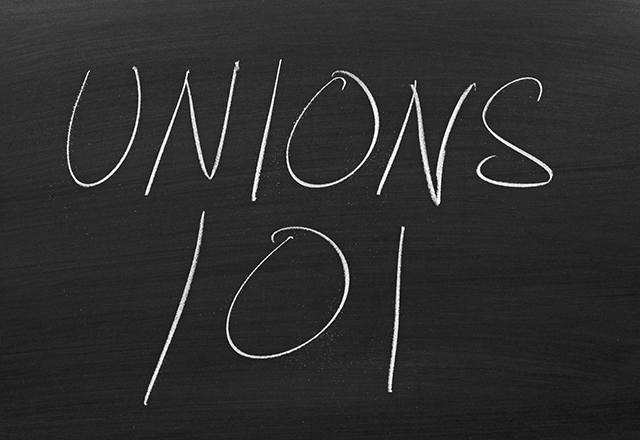“Employees shall have the right to self-organization, to form, join, or assist labor organizations, to bargain collectively through representatives of their own choosing, and to engage in other concerted activities for the purpose of collective bargaining or other mutual aid or protection…” (National Labor Relations Act of 19351).
In the United States, there are currently 33 graduate student employee unions fighting for graduate worker rights.2 These unions represent graduate students who are employed by their institutions to teach classes and conduct research. These responsibilities are paid work, so graduate students are more properly classed as graduate student employees (GSEs). While GSEs have rallied to unionize since the 1960s and early 1970s, recent events have once again brought national attention to the cause. On Sept. 20, 2019, the National Labor Relations Board (NLRB) proposed a new rule dictating that GSEs are in fact not employees and thus do not possess the right to unionize under the National Labor Relations Act. In part because the NLRB is appointed by the president, the board has changed its position on GSE unions three times in the last two decades, typically settling disputes on a case-by-case basis. Now, in an attempt to impose Trump-era opinions beyond Donald Trump’s presidency, the NLRB has proposed this formal rule:
GSEs at private colleges and universities fall under the National Labor Relations Act, administered by the National Labor Relations Board, and federal labor laws. GSEs at public institutions, however, are governed by state laws. Note, GSEs at public institutions are excluded from federal collective bargaining rights. The proposed rule threatens progress on both private and public fronts by establishing precedent and setting the tone against GSE unions.
Unions, historically and presently, exist to protect the rights of trained or skilled labor groups through negotiation with the employer. Negotiation between an interest group and the employer is termed collective bargaining. The academic world has long portrayed itself as exempt from the “shallow” discussions around workers’ rights due to the “sacred” nature of the mentor-mentee relationship. In reality, this relationship was never that different than any other apprenticeship. Nevertheless, the academic model was able to thrive without a union as graduate students followed in the footsteps of their mentors to become professors.
So why are GSE unions on the rise? As the interests of the employer and the employee diverge, unionization emerges. Universities have become systems of greed and self-perpetuating prestige, accepting more graduate students and hiring fewer professors. Between 2005 and 2015, graduate student employment rose by 16.7%, yet tenured and tenure track faculty rose only by 4.8%, which was less than the overall employment growth over the same period.3 Consequently, universities can no longer function without underpaid employees fulfilling the obligations once handled by full professors. In fact, GSEs and non-tenure track faculty now make up nearly three-quarters of the academic workforce.3 After six years4 of dedicated graduate labor, GSEs will still be unable to enter into the coveted academic guild. The dream of tenured professorship, once almost a certainty to any graduate student, has been exterminated. Those individuals who benefited most from the sacred mentor-mentee academic relationship have now destroyed it. GSEs have thus turned away from the guild model, a skill-specific organization of independent contractors, in favor of the industrial union model, a collection of all employees in an industry, to collectively bargain for higher wages and improved working conditions.
In the proposed rule regarding GSE rights, the NLRB is attempting to redefine “employees,” yet only Congress can legally amend statutes, including the National Labor Relations Act. The NLRB proposal is available for public comment until Nov. 22, 2019. View information on how to voice your opinion to the board on this matter here.5 The current momentum for GSE unionization can only be hindered by GSE apathy.
Resources
- National Labor Relations Act | NLRB | Public Website. Accessed 9 Oct. 2019.
- Coalition of Graduate Employee Unions | Www.TheCGEU.Org. Accessed 14 Oct. 2019.
- The State of Graduate Student Employee Unions: Momentum to Organize among Graduate Student Workers Is Growing Despite Opposition | Economic Policy Institute. Accessed 14 Oct. 2019.
- How Long Does It Take to Get a Ph.D. Degree – and Should You Get One? | Best Graduate Schools | US News. Accessed 14 Oct. 2019.
- Student Assistants | NLRB | Public Website. Accessed 14 Oct. 2019.
